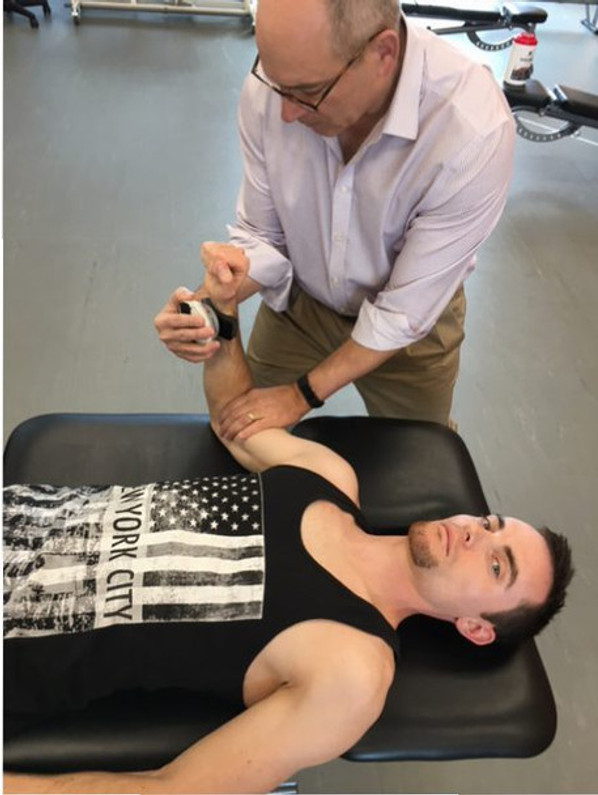Manual Muscle Testing
 Manual Muscle Testing is an assessment of muscle strength done by physical therapists, occupational therapists, chiropractors, kinesiologists, physiologists or other researchers and professionals for evaluation of weakness that can differentiate true weakness from imbalance or poor endurance. This kind of assessment is referred to by a few different names, like muscle strength grading, motor testing, but most often is referred to as manual muscle testing.
Manual Muscle Testing is an assessment of muscle strength done by physical therapists, occupational therapists, chiropractors, kinesiologists, physiologists or other researchers and professionals for evaluation of weakness that can differentiate true weakness from imbalance or poor endurance. This kind of assessment is referred to by a few different names, like muscle strength grading, motor testing, but most often is referred to as manual muscle testing.
Methods for Manual Muscle Testing
Manual muscle testing can be assessed by a number of methods:
- Manually
- Functionally
- Mechanically
If there is a suspected neurologic disease, a muscle imbalance or weakness the manual muscle testing is the main assessment used for evaluating a compliant involving muscle weakness. This is an important assessment for patients who had:
- A spinal cord injury
- A brain injury
- A stroke
- Neuropathy
- Amyotrophic lateral sclerosis
- A sports injury (ACL)
- A bone fracture
- A joint replacement
- Gait and Balance issues in older adults
The Oxford Scale for Manual Muscle Testing
The Oxford Scale (also know as Medical Research Council Manual Muscle Testing Scale) is the most commonly accepted method of evaluating muscle strength. This scale grades a patients strength on a 0 to 5 scale. It also aims to test key muscles in the upper and lower extremities using the examiner's resistance accordingly:
- Through full range activity with gravity counterbalance.
- Through full range activity against gravity.
- Through full range activity against some resistance.
- Through full range activity against strong resistance.
The most commonly tested muscles include the following:
- Hand intrinsics
- Finger flexors
- Wrist extensors
- Elbow extensors
- Shoulder abductors
- Plantar flexors
- Great toe extensor
- Dorsiflexors
- Knee extensors
- Hip flexors
These particular muscle groups are chosen to test to methodically evaluate the C5 to T1 nerve roots.
Limitations of the Oxford Scale
The Oxford Scale does have some limitations, which are:
- Only assess muscles when contracting concentrically.
- Non-linearity (the difference between grades 3 and 4 is not necessarily the same as the difference between grades 4 and 5.
- Poor functional relevance.
- Intra-rater reliability.
- The difficulty of applying the Oxford Scale to all patients in a clinic since many patients that are assessed do not have the full range due to their respective pathology).
In conclusion, manual muscle testing helps to diagnose many problems when weakness plays a role. To produce valid and reproducible results it is important to us careful technique. Even though this method is subjective, a more objective approach can be used when using hand-held dynamometers like a MicroFET2, Lafayette Handheld Dynamometer or a hand-grip dynamometer.
Related:
Is Manual Muscle Testing Really Objective?
Recent Posts
-
How Occupational and Hand Therapists Perform Initial Hand Function Evaluations
When a patient begins hand therapy—whether recovering from an injury, surgery, or neurolo …Apr 6th 2025 -
What to Expect During Hand Therapy: A Guide for Patients and Caregivers
If you’re starting hand therapy—whether after surgery, a stroke, or a neurological …Apr 6th 2025 -
Improve Hand Function and Dexterity with the Neofect Smart Pegboard
The Neofect Smart Pegboard is a revolutionary tool in the field of occupational therapy. I …Mar 25th 2025



